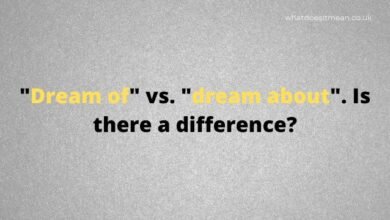Understanding Cost Classification
Cost classification refers to how a business classifies its expenses. It is used to determine the economic value of expenditures. Any type of business requires the owner to invest capital. This amount needs to be tracked over time to account for all costs, from the initial start-up to the final profit. There are many ways to classify these costs, each with its own format. Here are some of the most common cost categories and formats::-
– Functional costs. This category includes all expenses related to manufacturing and selling. It flows from the basic managerial activities and is directly related to real construction or manufacturing. Indirect costs include administrative, distribution, selling, and warehousing and transport expenses. Depending on the nature of the product, these costs are classified as direct or indirect. This section will explain the different types of costs. This overview of the cost structure will help you decide which type of costs apply to your business.
– Production and Distribution. This category encompasses costs associated with production and selling. These expenses stem from basic management activities and are directly related to the real construction and manufacturing of the product. – Marketing and Selling. This category involves expenses that are not directly related to the end product but are still necessary. – Administrative and distribution costs. These costs are usually divided into direct and indirect. Depending on the type of product you make, they will be categorized as either variable or fixed.
– Administrative and transport costs. These costs are grouped by function. They are associated with the production process and the general office departments. Then there are the sales and marketing departments. These costs are also related to the production process. Listed here are fixed and variable costs. Those costs that are related to the final product are called administrative and distribution costs. This is another way to categorize your costs. It is important to know exactly what your operating expenses are so you can make informed decisions about your company’s budgeting.
Operational and Production costs are grouped by function. This means that they are all expenses related to the production or selling process. This type of cost is directly related to the real construction and manufacturing of the product. The operational and distribution costs, on the other hand, are classified by the way they are related to the final product. The term “cost” can have many different meanings in the common language. It can also refer to the price of a product.
The basic cost categories in an organisation are known as avoidable and non-avoidable costs. In other words, avoidable costs can be avoided by making changes that improve the quality of the product. While avoidable costs are easily preventable, unavoidable and standard costs are a more difficult type to predict. You can also categorize the different types of operational costs by the amount of time and location they take. In most cases, the process of acquiring a new product can be expensive, so consider investing in the right technology.
The most basic form of cost classification is by function. This type of cost involves the costs of production and selling that flow from the basic managerial activities. Typically, these costs include the production and sales costs, as well as the costs of the administration and distribution processes. In addition, the normal and abnormal types of operational costs are further subdivided into direct and indirect. A company can incur a number of different costs in a single day, and these costs are often the most inseparable in a business.
The most common types of costs are functional and fixed. Functional costs include those that flow from basic managerial activities. These types of costs are generally related to real construction and manufacturing. An operational cost is the total of costs that are not associated with production and are not part of a product’s production. In other words, the normal and standard costs are the same. A business can also have an administrative cost, which is a variable. An operation can incur the same costs in different areas.
There are several ways to classify costs. The first is the classification by function. This involves classifying costs based on the purpose. The production department is responsible for production costs, while the administration department has the responsibility for marketing and sales. The administration and sales departments are responsible for marketing and selling. Among the other types of costs, the administrative and sales department has the responsibility for handling the sale and distribution of products. It is responsible for calculating both the normal and abnormal costs.

